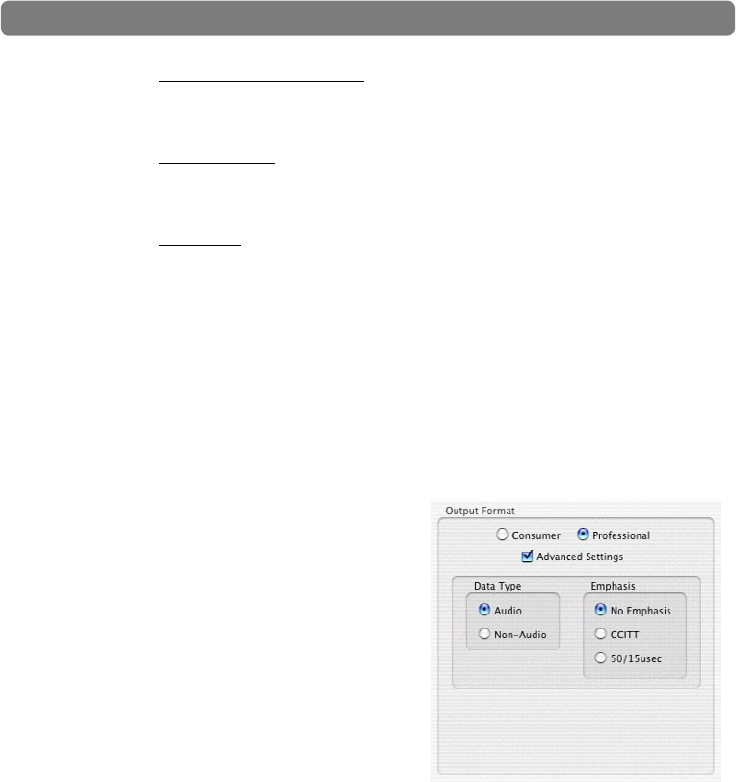
|
35Delta 1010 User Guide
Original (Copy Permitted) – This setting indicates that the audio stream
currently playing is a “master” recording and that the source material
may be copied by a recording device.
1st Generation – This setting indicates that the source material is a first
generation copy of the master recording. Most recording devices will
reject material with this SCMS setting.
No SCMS – This setting does not apply any SCMS restrictions to the
outgoing audio stream. This allows an external recording device to
make a copy of the outgoing audio data.
NOTE: Some manufacturers’ products may interpret these codes
differently and may require you to experiment with the settings until
proper operation is achieved.
< OUTPUT FORMAT: PROFESSIONAL – ADVANCED SETTINGS:
The following settings appear when “Professional” has been selected in the
Digital Output Format section and the Advanced Settings box has been checked:
• Data Type: This parameter toggles
a bit in the outgoing S/PDIF data
stream that indicates whether the
signal is “audio” or “non-audio.” In
most cases, this parameter should
be left in its default “audio” state.
One exception to this is if you are
sending Dolby Digital or AC-3
encoded signals to a home-theater
receiver or other surround decoding
device. Dolby Digital and AC-3
are technically considered to be
“non-audio” signals and some decoders will ignore a S/PDIF signal if this
bit is not set correctly. Note that most modern DVD player applications
automatically set this parameter to its correct setting and you will not have to
make any changes to the Data Type setting
• Emphasis: This parameter lets you indicate if pre-emphasis has been
applied to the outgoing digital audio signal. In most cases, the default “Not
Indicated” setting will apply unless the outgoing audio has been encoded
with “50/15 µsec” or “CCITT” pre-emphasis.


















